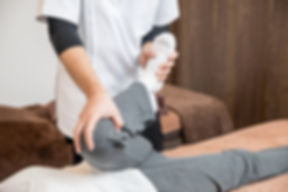
The Benefits of Tui-na
Tui-na is a type of alternative therapy long used in traditional eastern medicine, a form of alternative medicine that originated in China. Tui-na involves the use of several types of manual therapy techniques consist of connective tissue mobilization and manipulation, manual traction, passive range of motion, soft tissue mobilization and manipulation, and therapeutic bodywork.
As the code descriptor states, ‘manual’ providers use their hands to administer these techniques. Therefore, procedure code 97140 describes ‘hands-on’ therapy techniques.
Typically, the goals of Tui-na are to modulate pain, increase joint range of motion, and reduce or eliminate soft tissue swelling, inflammation, or restriction. These techniques also induce relaxation and remove contractile and non-contractile tissue extensibility.
How Tui-na Works
Tui-na is thought to help stimulate the flow of vital energy (called "Qi") throughout your body. According to the principles of traditional medicine, health problems occur when the flow of qi is blocked at any point along a meridian (an invisible line that connects your organs with other parts of your body). By removing these blockages, Tui-na is said to restore your body's balance of qi and, in turn, improve your health.
Uses
In alternative medicine, Tui-na is said to aid in the treatment of the following conditions:
-
Carpal tunnel syndrome
-
Fatigue
-
Muscle spasms
-
Musculoskeletal problems
In addition, Tui-na is said to alleviate pain, enhance energy, and reduce stress.
Evidence Based Medicine
Chronic Fatigue Syndrome
Tui-na shows promise in the treatment of chronic fatigue syndrome, according to a study published in Chinese Acupuncture & Moxibustion in 2010. For the study, 90 patients with chronic fatigue syndrome were split into three groups: one group underwent tuina, one group practiced tai chi, and one group received Fluoxetine (an antidepressant medication sometimes used in the treatment of chronic fatigue syndrome).
After a month, members of the Tui-na group showed the greatest improvements in free radical metabolism. The study's authors note that this effect may reduce fatigue and, in turn, help treat chronic fatigue syndrome.
Menstrual Cramps
A small study published in the Journal of Traditional Chinese Medicine in 2008 shows that a combination of acupuncture and Tui-na may help alleviate menstrual cramps. In tests on 60 women, researchers determined that Tui-na plus acupuncture was more effective than acupuncture alone for menstrual cramp relief.
Carpal Tunnel Syndrome
A study published in the Journal of Traditional Chinese Medicine in 2012 indicates that a combination of Tui-na and warm-needling (a form of acupuncture) may help treat carpal tunnel syndrome. In tests on 98 people with carpal tunnel syndrome, the study's authors found that those assigned to the combination therapy experienced greater improvements than members of a control group given medication.
Fibromyalgia
A combination of Tui-na and yoga may benefit people with fibromyalgia, suggests a small study published in the Journal of Alternative and Complementary Medicine in 2007. For eight weeks, 40 women with fibromyalgia took part in weekly sessions involving either yoga or a combination of yoga and Tui-na. In their analysis of findings on the 33 women who completed the study, researchers found that members of the yoga plus Tui-na group experienced greater improvements in pain.
